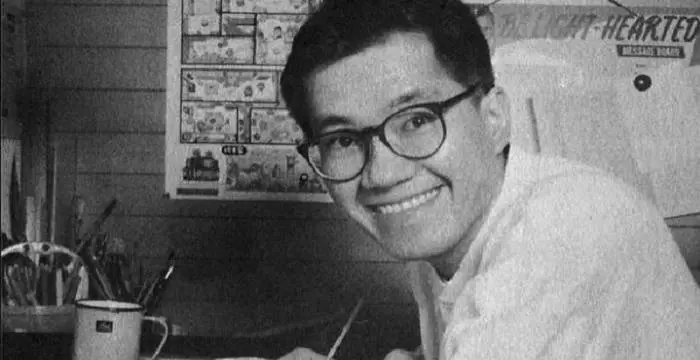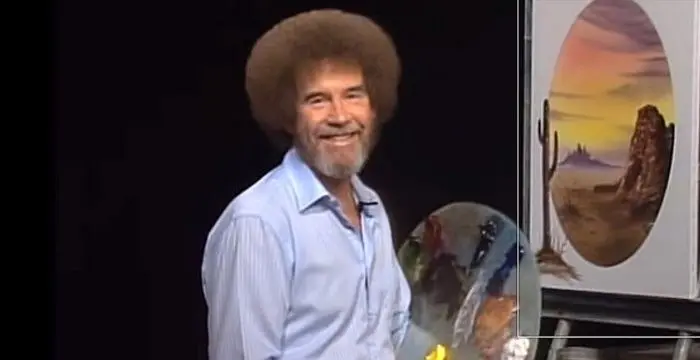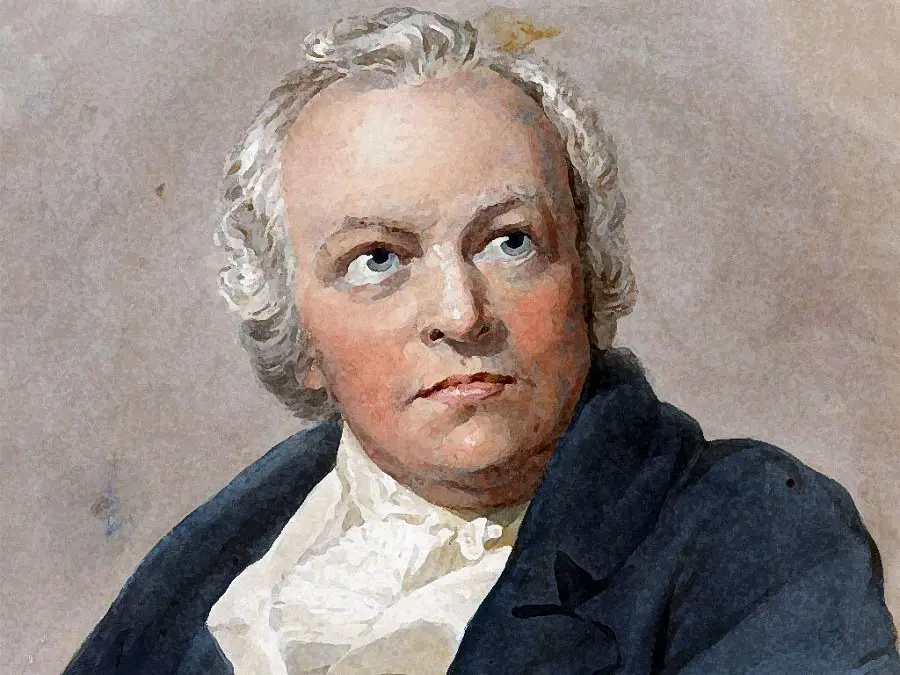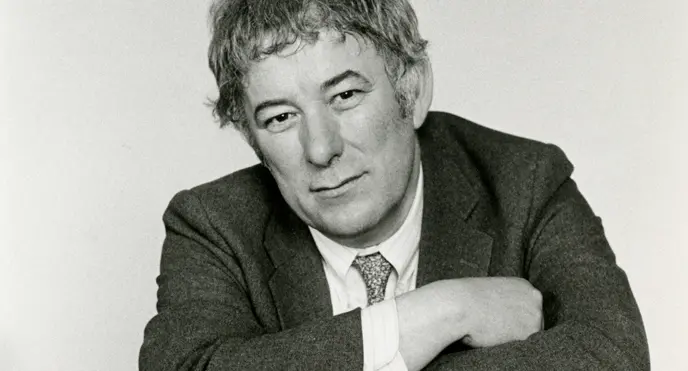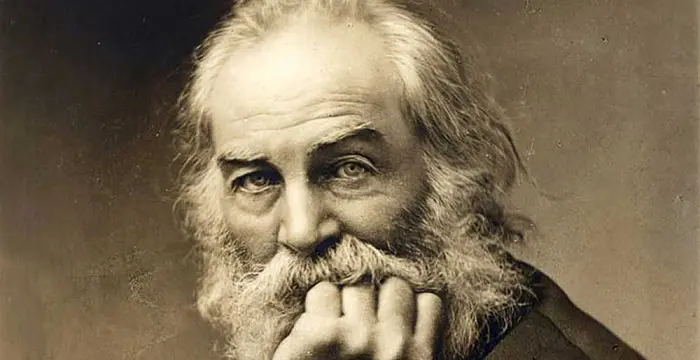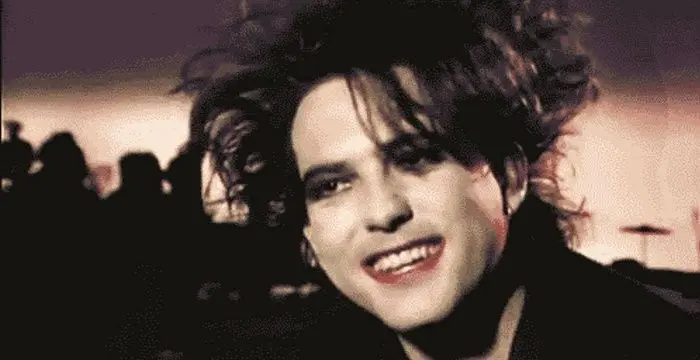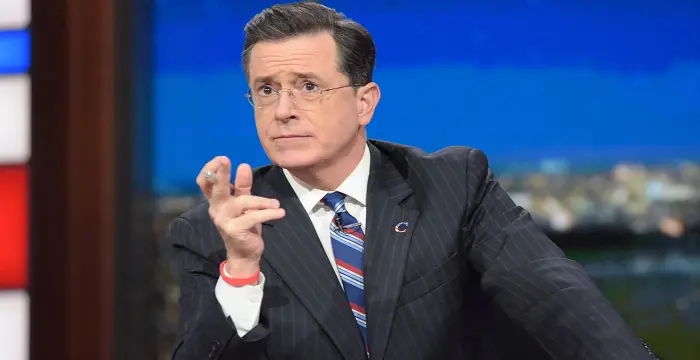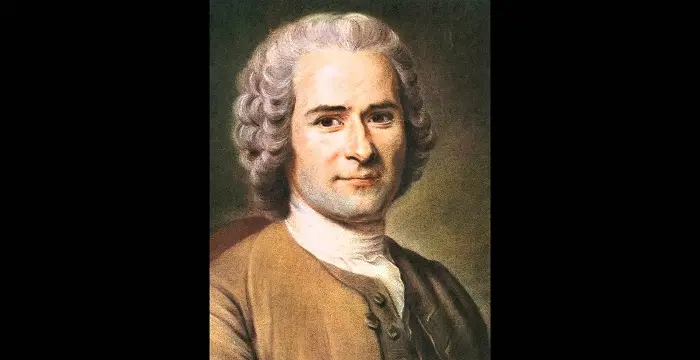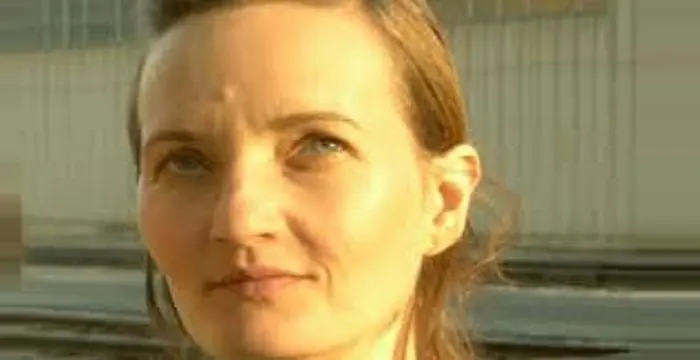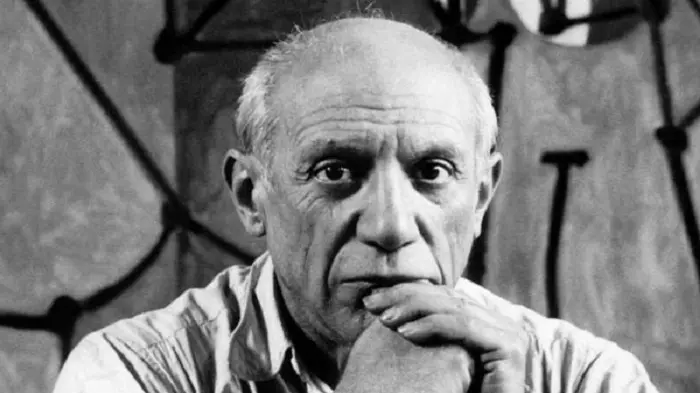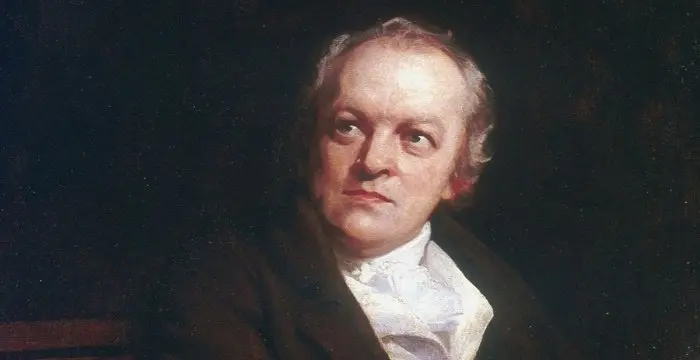
William Blake - Artists, Birthday and Facts
William Blake's Personal Details
William Blake was an English poet, known for his works of art and literature including poems ‘The Lamb’ and ‘The Tyger’
| Information | Detail |
|---|---|
| Birthday | November 28, 1757 |
| Died on | August 12, 1827 |
| Nationality | British |
| Famous | Artists & Painters, Artists, Poets, Miscellaneous, INFP |
| Spouses | Catherine Blake |
| Universities |
|
| Birth Place | Soho |
| Religion | Moravian Church |
| Gender | Male |
| Father | James Blake |
| Mother | Catherine Wright Armitage Blake |
| Sun Sign | Sagittarius |
| Born in | Soho |
| Famous as | Painter |
| Died at Age | 69 |
// Famous Artists
Susan Mikula
Susan Mikula is an American artist and photographer. Check out this biography to know about her childhood, family life, achievements and fun factsabout her life.
Akira Toriyama
Akira Toriyama is a Japanese manga artist. This biography profiles his childhood, family, personal life, achievements, etc.
Bob Ross
Bob Ross was a celebrated, creative American painter and an art instructor. Check out this biography to know about his birthday, childhood, family life, achievements and fun facts about him.
William Blake's photo
Who is William Blake?
William Blake was a famous 18th century English artist, poet and printmaker. The poet was highly inclined towards art, and was always encouraged by his parents. At the age of ten, he was sent to one of the best institutions, so that he could excel in his passion. Later, he trained under printmaker, James Basire, showing innovation and dexterity in the art of etching. He pursued his higher education in painting and illustration from the 'Royal Academy of Arts', where he became more politically and socially conscious. After his father's demise, he began working independently writing and illustrating his own poems, while also working for other famous writers. He established a new technique of engraving, known as relief etching, where the text and its illustrations were illuminated on a copper plate, using a variety of acidic and non-acidic media. Though this poet remained unappreciated throughout his life, he produced many masterpieces, like 'Songs of Innocence and Experience', and 'Daughters of Albion'. He is also famous for his illustrations, particularly his last unfinished project, which is a pictorial representation of renowned poet Dante's literary work, ‘Divine Comedy’. This distinguished writer-illustrator's works have now become the benchmarks for any aspiring artist and poet
// Famous Poets
Charles Bukowski
Charles Bukowski was a German-born American novelist, short story writer and poet. With this biography, learn in details about his childhood, life, works, career and timeline
Seamus Heaney
Nobel Laureate Seamus Heaney was an Irish poet, playwright and translator. Know about his profile, childhood, life and timeline in the biography below.
Walt Whitman
Walt Whitman was an American poet, journalist and humanist. Read this brief biography to find more on his life & timeline.
Childhood & Early Life
William Blake was born in Soho, London, to James, a garment manufacturer, and his wife Catherine Wright Armitage, on November 28, 1757. The young boy had six other siblings, four of them being younger than him.
The child was baptized in Piccadilly’s 'St James's Church', on December 11, 1757.
As a young boy, his parents would often buy him drawings of Greek relics, which he would sit and copy. Through this practice, he acquainted himself with the painting styles of great artists like Michelangelo and Raphael.
By the time he was ten, William's parents took him out of school, and sent him to 'Pars's drawing school', where he would be able to hone his innate talent as an artist. Otherwise, he was privately taught by his mother who instilled in him a liking for the poetry of writers like Edward Spenser and Ben Jonson.
In 1772, Blake was sent to James Basire, renowned engraver who practised at his workshop on Great Queen Street. When the apprentice turned twenty-one, he graduated as a professional, after which he took up his first assignment of making engravings inspired by the Gothic churches of London.
When he was almost twenty-two, he started attending the 'Royal Academy of Arts' in London. In this institution, he often criticized the artistic style of famous Baroque painter, Paul Rubens, thus getting into frequent trouble with portrait artist Joshua Reynolds, who was also the academy's president.
During this time, he grew close to fellow students and future artists, George Cumberland, John Flaxman, and Thomas Stothard.
Career
The gifted engraver and poet produced his first literary work in 1783, entitled 'Poetical Sketches', which was a compilation of poems written by him.
The following year, in 1784, he started his own workshop, assisted by fellow engraver James Parker and publisher Joseph Johnson. During this time, Blake developed extreme political views, where he condemned class division and slavery in the English society.
In 1784, William wrote 'An Island in the Moon', which remained incomplete till his death.
Eight years later, in 1788, the talented artist began using the process of ‘relief etching’ to produce his poems, accompanied by illustrations. He jotted down the poems on copper planes, and then gave it an illuminating effect.
In 1789, he wrote 'Songs of Innocence', portraying childhood through 19 timeless poetic illustrations including 'The Lamb', and 'The Chimney Sweeper'. 'The Lamb' became the symbol of innocence, drawing similarities with Jesus Christ.
William made pictorial depictions of feminist writer Mary Wollstonecraft's book, 'Original Stories from Real Life', in 1791. Though it is still a subject of speculation whether the two writers had really met, there are evidences that they had similar opinions about sexuality and marriage.
In 1793, he wrote 'Daughters of Albion', where he advocated sexual equivalence in marriage, and the rights that married women should have.
As a crusader for human rights and freedom, Blake penned 'Songs of Experience' in 1794, making the poem 'The Tyger', the focal point of the whole collection of 26 verses. The poem is considered to be related to 'The Lamb', where he asks, "Did he who made the Lamb make thee?"
From 1795-99, William produced several popular illustrations and poems, including 'The Night of Enitharmon's Joy', 'Newton', and 'A Negro Hung Alive by the Ribs to a Gallows'. The latter, is a pictorial representation of author John Gabriel Stedman's 'Narrative, of a Five Years' Expedition, against the Revolted Negroes of Surinam', showing his hatred for racial slavery.
Later, the engraver was hired as an illustrator by poet William Hayley, for which the former had to take up residence in Felpham, then Sussex. During his stay in Felpham, in 1804, Blake began writing 'Milton', and 'Jerusalem', the second one being the closest to his heart.
For 'Jerusalem', he initially requested the assistance of art dealer Robert Cromek, expressing his intention to depict Chaucer's characters from the 'Canterbury Tales'. Cromek, instead hired William's childhood friend Thomas Stothard, leaving the enthusiastic poet disheartened and enraged.
In 1809, William exhibited his own interpretation of the concept, giving it the title of 'The Canterbury Pilgrims'. Along with the etchings, he provided a critical analysis of the famous 'Canterbury Tales', as well as its creator Chaucer. However, the display did not have many viewers, and the paintings were bought by none.
In 1826, the exceptional illustrator was given the order of creating etchings of Italian poet Dante Alighieri's masterpiece, 'Divine Comedy'. Blake relentlessly worked on it for a year, including the day he died, producing incomplete but remarkable watercolours and engravings.
Major Works
Appreciated posthumously, this poet’s creations, ‘Songs of Innocence’ and ‘Songs of Experience’ are considered the best works ever produced. They have become so popular that celebrated composers like Ralph Vaughan Williams, Joseph Holbrooke, and Jeff Johnson, among others have composed music for the poems.
Personal Life & Legacy
In 1782, Blake fell in love with Catherine Boucher while he was venting out his frustrations at being rejected by someone else. The couple got married on August 18 the same year. Catherine was taught to read and write after marriage, by her new husband. She also learnt engraving, and became a constant companion to the poet.
The prolific poet succumbed to an unknown disease on August 12, 1827, at his residence in Fountain Court, Strand. He is said to have been working on the illustrations of Dante’s ‘Divine Comedy’, and died in the evening after declaring his undying love for his wife.
Several books have been written about Blake and his poems, some of the most popular and comprehensive being 'Blake: Prophet Against Empire: A Poet's Interpretation of the History of His Own Times', by David Erdma, and 'Blake's Apocalypse', by Harold Bloom.
From 2000-2015, many exhibitions have been held in England, to showcase this illustrator's creations, the most recent being at 'The Ashmolean Museum', in Oxford.
Trivia
This predecessor of the Romantic Age in English literature, was arrested on one instance in 1803, after he allegedly hurled abuses at the king and fought with a soldier, John Schofield.
This English poet is known to have seen God at a young age, along with other visions having Biblical significance
// Famous INFP
Robert Smith
Robert Smith is an English musician and the lead singer of the British rock band, ‘The Cure.’ This biography of Robert Smith gives detailed information on his profile, childhood, life and timeline.
Stephen Colbert
Stephen Colbert is an American comedian and satirist. Read the biography to learn all about his childhood, career, profile and timeline.
Jean-Jacques Rousseau
Jean-Jacques Rousseau was a noted Swiss-born philosopher, writer and composer. Check out this biography to know about his childhood, family life, achievements and other facts about his life.
William Blake biography timelines
- // 28th Nov 1757William Blake was born in Soho, London, to James, a garment manufacturer, and his wife Catherine Wright Armitage, on November 28, 1757. The young boy had six other siblings, four of them being younger than him.
- // 11th Dec 1757The child was baptized in Piccadilly’s 'St James's Church', on December 11, 1757.
- // 1772In 1772, Blake was sent to James Basire, renowned engraver who practised at his workshop on Great Queen Street. When the apprentice turned twenty-one, he graduated as a professional, after which he took up his first assignment of making engravings inspired by the Gothic churches of London.
- // 1782In 1782, Blake fell in love with Catherine Boucher while he was venting out his frustrations at being rejected by someone else. The couple got married on August 18 the same year. Catherine was taught to read and write after marriage, by her new husband. She also learnt engraving, and became a constant companion to the poet.
- // 1783The gifted engraver and poet produced his first literary work in 1783, entitled 'Poetical Sketches', which was a compilation of poems written by him.
- // 1784The following year, in 1784, he started his own workshop, assisted by fellow engraver James Parker and publisher Joseph Johnson. During this time, Blake developed extreme political views, where he condemned class division and slavery in the English society.
- // 1784In 1784, William wrote 'An Island in the Moon', which remained incomplete till his death.
- // 1788Eight years later, in 1788, the talented artist began using the process of ‘relief etching’ to produce his poems, accompanied by illustrations. He jotted down the poems on copper planes, and then gave it an illuminating effect.
- // 1789In 1789, he wrote 'Songs of Innocence', portraying childhood through 19 timeless poetic illustrations including 'The Lamb', and 'The Chimney Sweeper'. 'The Lamb' became the symbol of innocence, drawing similarities with Jesus Christ.
- // 1791William made pictorial depictions of feminist writer Mary Wollstonecraft's book, 'Original Stories from Real Life', in 1791. Though it is still a subject of speculation whether the two writers had really met, there are evidences that they had similar opinions about sexuality and marriage.
- // 1793In 1793, he wrote 'Daughters of Albion', where he advocated sexual equivalence in marriage, and the rights that married women should have.
- // 1794As a crusader for human rights and freedom, Blake penned 'Songs of Experience' in 1794, making the poem 'The Tyger', the focal point of the whole collection of 26 verses. The poem is considered to be related to 'The Lamb', where he asks, "Did he who made the Lamb make thee?"
- // 1795 To 1799From 1795-99, William produced several popular illustrations and poems, including 'The Night of Enitharmon's Joy', 'Newton', and 'A Negro Hung Alive by the Ribs to a Gallows'. The latter, is a pictorial representation of author John Gabriel Stedman's 'Narrative, of a Five Years' Expedition, against the Revolted Negroes of Surinam', showing his hatred for racial slavery.
- // 1803This predecessor of the Romantic Age in English literature, was arrested on one instance in 1803, after he allegedly hurled abuses at the king and fought with a soldier, John Schofield.
- // 1804Later, the engraver was hired as an illustrator by poet William Hayley, for which the former had to take up residence in Felpham, then Sussex. During his stay in Felpham, in 1804, Blake began writing 'Milton', and 'Jerusalem', the second one being the closest to his heart.
- // 1809In 1809, William exhibited his own interpretation of the concept, giving it the title of 'The Canterbury Pilgrims'. Along with the etchings, he provided a critical analysis of the famous 'Canterbury Tales', as well as its creator Chaucer. However, the display did not have many viewers, and the paintings were bought by none.
- // 1826In 1826, the exceptional illustrator was given the order of creating etchings of Italian poet Dante Alighieri's masterpiece, 'Divine Comedy'. Blake relentlessly worked on it for a year, including the day he died, producing incomplete but remarkable watercolours and engravings.
- // 12th Aug 1827The prolific poet succumbed to an unknown disease on August 12, 1827, at his residence in Fountain Court, Strand. He is said to have been working on the illustrations of Dante’s ‘Divine Comedy’, and died in the evening after declaring his undying love for his wife.
- // 2000 To 2015From 2000-2015, many exhibitions have been held in England, to showcase this illustrator's creations, the most recent being at 'The Ashmolean Museum', in Oxford.
// Famous Artists & Painters
Micheline Roquebrune
Micheline Roquebrune is a petite Moroccan-French painter best known as the third wife the legendary Scottish actor Sir Sean Connery. Check out this biography to know about her birthday, childhood, family life, achievements and fun facts about her.
Yvonne McGuinness
Yvonne McGuinness is an Irish multimedia artist. This biography profiles her childhood, family, personal life, career, etc.
Akira Toriyama
Akira Toriyama is a Japanese manga artist. This biography profiles his childhood, family, personal life, achievements, etc.
Bob Ross
Bob Ross was a celebrated, creative American painter and an art instructor. Check out this biography to know about his birthday, childhood, family life, achievements and fun facts about him.
Pablo Picasso
Pablo Picasso was one of the greatest painters of the 20th century. With this biography, explore his life, childhood, profile and timeline.
Johannes Vermeer
Johannes Vermeer was a famous Dutch Baroque painter of the seventeenth century. This biography provides detailed information about his childhood, profile, career and timeline
William Blake's FAQ
What is William Blake birthday?
William Blake was born at 1757-11-28
When was William Blake died?
William Blake was died at 1827-08-12
Where was William Blake died?
William Blake was died in Soho
Which age was William Blake died?
William Blake was died at age 69
Where is William Blake's birth place?
William Blake was born in Soho
What is William Blake nationalities?
William Blake's nationalities is British
Who is William Blake spouses?
William Blake's spouses is Catherine Blake
What was William Blake universities?
William Blake studied at Royal Academy of Arts
What is William Blake's religion?
William Blake's religion is Moravian Church
Who is William Blake's father?
William Blake's father is James Blake
Who is William Blake's mother?
William Blake's mother is Catherine Wright Armitage Blake
What is William Blake's sun sign?
William Blake is Sagittarius
How famous is William Blake?
William Blake is famouse as Painter

